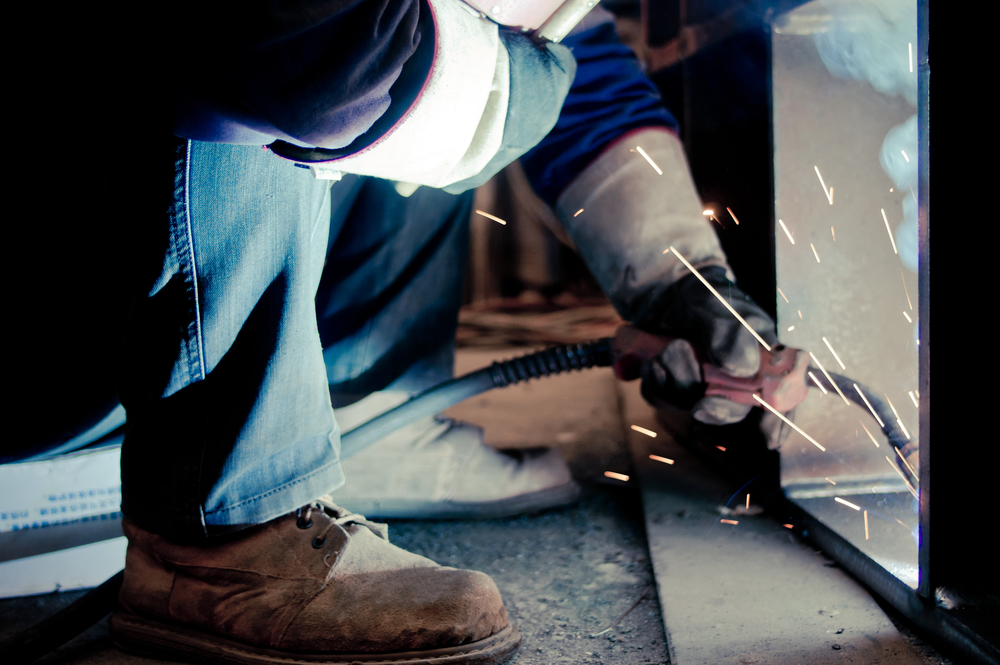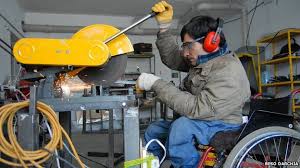Workplace Safety For Metal Fabrication Shops

Metal fabricators create products with the use of tools that cut, bend, weld, finish, and assemble metal and minerals, Often, the process involves intense heat, sharp cutting tools, and harsh chemicals. Naturally, metal fabrication shops have to incorporate safety into the workflow in order to prevent accidents and protect workers.
How To Improve Workplace Safety For Metal Shops
These are some of the primary areas to concentrate on in order to comply with safety guidelines and drastically reduce the risk of injuries:
Machine Safety Guards
One of the most common violations that OSHA finds is the lack of machine guards and other preventative equipment. Without these, workers can suffer from severe injuries. Common injuries include crushed hands, burns, blindness, and amputations. With proper safety equipment, many of these injuries are entirely preventable. The lack of these safety measures was the most common reason that OSHA penalized machine shops in the last year.
Electrical Hazards
Machine fabrication equipment draws a lot of power. Besides safety guards, electrical hazards ranked second as a commonly found safety violation. In the US, a worker dies every day because of electrocution, and many more suffer from burns. Common electrical hazards include using extension cords in an unsafe way, improper grounding, and poor wiring design. Any employees who use electric tools or machines are at risk.
Handling Materials
Metal fabrication involves moving heavy and sometimes dangerous materials around. All employees who are responsible for transport should have proper training in the safest way to move materials and in using the vehicles they transport these materials in. Poor materials handling accounted for many OSHA safety violations in previous years.
Personal Protective Gear
In some shops, employees furnish their own safety gear. In other shops, the employer provides everything. Either way, it is the employer’s responsibility to ensure that each employee has and uses adequate protective equipment for the tasks that they are doing. In some cases, employees may require training in the proper use of their gear. Common protective gear includes eye protection, respiratory protection, gloves, boots, and helmets.
Toxic Chemicals
Metal fabrication involves the use of many harsh and dangerous chemicals. They can cause illnesses or injuries if they are spilled or inhaled. Workers need training about the safe use and disposal of these substances.
Other Safety Hazards In Metal Shops
The list above includes the most common reasons that OSHA has penalized metal fabricators. Other safety risks include fire hazards, unsafe working surfaces, and hazard communication.
Why Metal Fabricators Focus on Workplace Safety?
In just the previous year, companies spent millions because they violated OSHA safety regulations and had to pay penalties. This cost is in addition to the expense of compensation and lost productivity for injured workers. Of course, no company wants to pay penalties. Even more, they don’t want to have their employees injured. Companies that focus upon worker safety can save money, reduce turnover, and of course, enjoy a good reputation as a safe employer that cares about employee safety.
3 challenges faced by the healthcare industry today

The healthcare industry is facing lots of challenges due to the advancement in technology and new regulations like the Affordable Care Act. They are struggling to make a profit and overcome the hurdles to run their business. Here are the major challenges faced by this industry today.
Cyber risks
Electronic healthcare records are now kept today. This opens door to cyber attacks and risk of loosing important data. Data security is a very big issue in the healthcare industry. The hospital operation is automated now and so if something goes wrong then the entire system may shut down. There can be data breaches, network disruptions, etc. and these might affect the financial stability of the healthcare provider.
Implementing telemedicine
Telemedicine is now a common practice due to the advancement in technology. This is due to the Affordable Care Act which lets patients get affordable healthcare facilities. However, if the doctors are not well trained on this aspect, they won’t be able to give proper treatment to the patients.
Managing high volume of patients
The number of patients is increasing due to the rise of chronic disease and obesity. So, there is a huge demand for healthcare facilities. The emergency departments are also overloaded with patients. The healthcare providers are having a difficult time to cope up with this volume of patients.
The healthcare industry has to combat these challenges all the time. They have to provide high-quality service to the patients no matter how difficult the situation is.












